Wooden houses have become a regular feature in the magazine. Interest in timber construction is high and many questions arise about how to build, durability, energy efficiency or behaviour in difficult or even extreme conditions. There is a fear that a timber-framed house is less durable than one made of brick or concrete. This is a misperception and to convince you, we have chosen a house built by Dimmer in Corsica. Being an island, air currents are constantly present, with winds reaching very high speeds. The house was built in 2016 and the owners have had enough time to realize the qualities of the house. They are satisfied that at wind speeds of over 150 km/h, the house is silent and the wind gusts are not felt. They were so pleased that they recommended the builder to other homeowners in the area. As you can see, the story of the three little pigs is no longer relevant. 😉
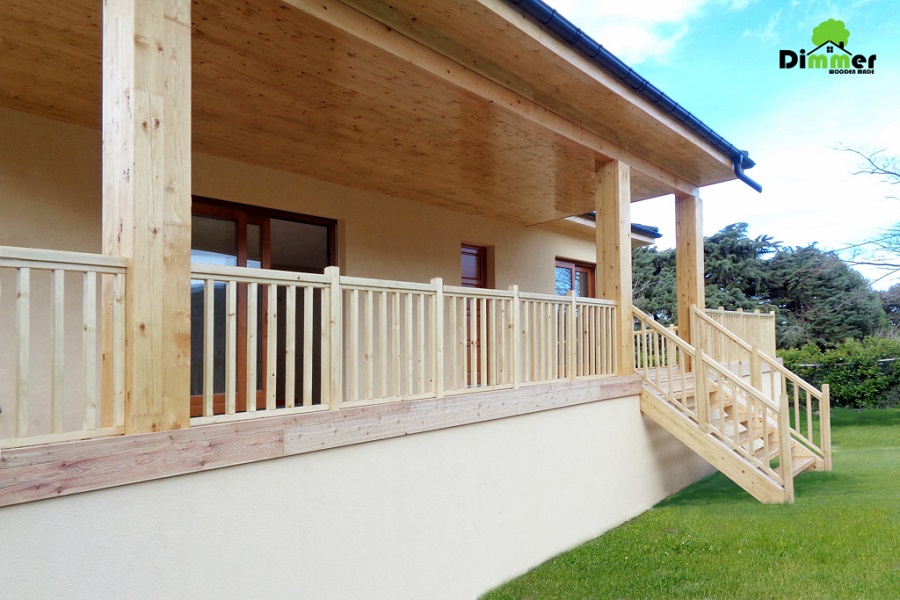
A house with a terrace, ideal for holidays with family and friends
The building represents the family's holiday home. The project respects the architecture of the area, with a single storey house built on a high foundation. On the same foundation is the terrace, very similar to the porches of Romanian village houses. A lot of natural wood has been used, in its natural colour, which gives the house a pleasant and discreet appearance.
The house is not large, but it has all the necessities of a holiday home. Of the 123 m² of the interior, a large part is the living area which has access to the 23 m² terrace from two sides via two sliding glass doors. The rest of the space is divided between the two bedrooms, kitchen and bathroom.
Being a high ground floor, access is via either of the two wooden staircases leading to the terrace. The stairs are simple, like the terrace, with a central wickerwork and railings also made of wood. The pillars, railings, arrow and ceiling of the terrace are made of molid and the wooden floor of larch. One side of the terrace is not covered, letting light freely enter the house.
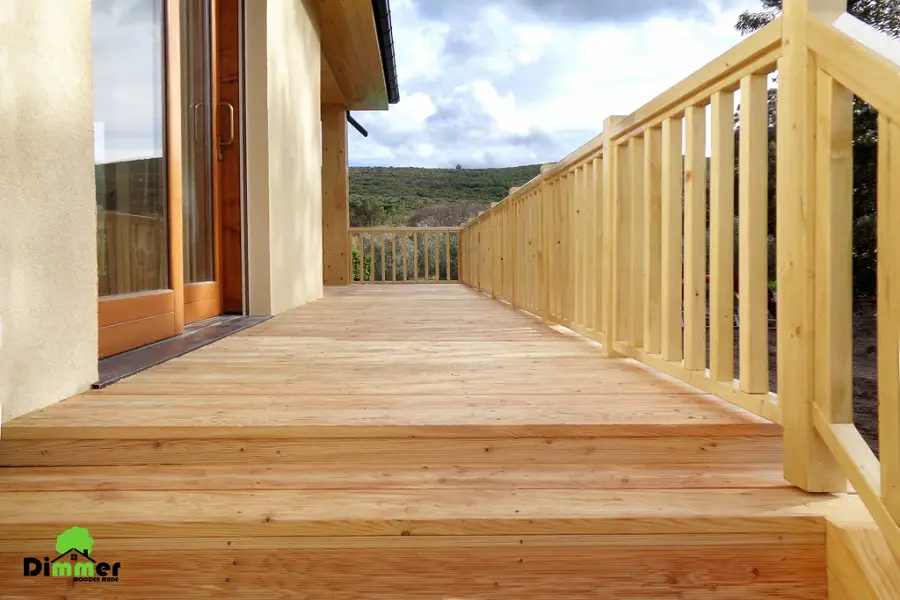
OSB - important role in wind and earthquake resistance of the house
The strength of the house is its very high wind resistance and stability in a climate with wind gusts frequently reaching 150 km/h. The owners say that no matter how strong the wind blows, the interior is not affected. This strength is due to the very sturdy wooden structure, made of 60×200 mm posts and beams and the OSB that enclose the walls and "hold" the house to lateral loads from wind and earthquake.
I think it's a good time to look at these OSB panels and talk about their role in timber frame house construction. Opinions frequently arise that they are unsturdy wood chip boards and that it is cold in OSB-built houses. These are totally wrong. OSB is a very strong and stable building material that plays a role in the strength structure of the house. Unlike other building materials, it is much lighter, providing the same stability and strength to the house at a much lower foundation load. This results in lower material consumption and therefore lower foundation costs.
OSB boards are mounted on at least one side of the wooden wall structure (depending on the strength calculation), creating spaces within the wall for generous layers of insulation. This insulates the house very well thermally, but also acoustically, as the thick layer is difficult for sound waves to penetrate, both from the outside to the inside and vice versa. Well-built timber-frame houses are energy efficient, safe and well insulated.
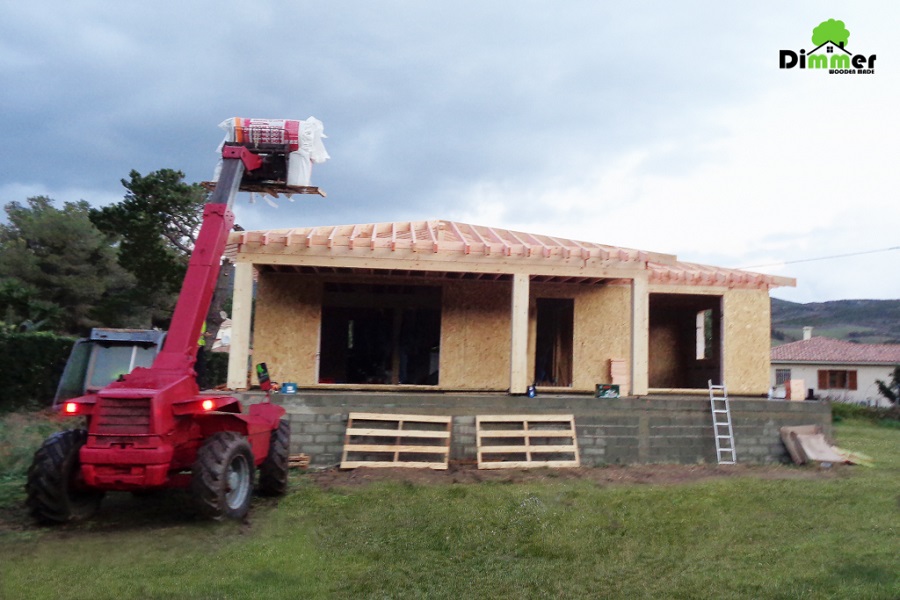
A construction site that lasted just over a month
But back to the house in Corsica. The design and strength calculations were done by the beneficiary's design team, and the construction was carried out by Dimmer in two stages, in the factory and on site. In the factory in Comănești were assemble the walls of wooden structure and OSB panels. The interior was insulated with 200 mm thick basalt wool. The beams and other roof elements were also glued together. All wood was treated 4functions, i.e. against fungi, mould, insects and fire.
All these factory operations took about 2 weeks. It should be mentioned, however, that this time is valid for smaller constructions, i.e. 100-150 sqm. For larger houses, the factory time can be up to a month.
The construction elements obtained in the factory were packed, loaded onto a lorry and transported to Corsica, where the second stage of construction began. Here, the walls, anti-condensation foils, metal profiles and roof elements were installed on the foundation already erected by the customer. Basaltic wool 300 mm thick was used to insulate the roof.
After "assembling" the house, another layer of 60 mm basalt wool insulation was installed on the outside, which was then plastered. The interior was clad with plasterboard. All this work on site took a total of 30 days. Short working time on site is one of the great benefits of a timber frame house. As much of the work is done in the factory, it eliminates the waiting times required for building with other materials, and the site is much cleaner with very little waste.
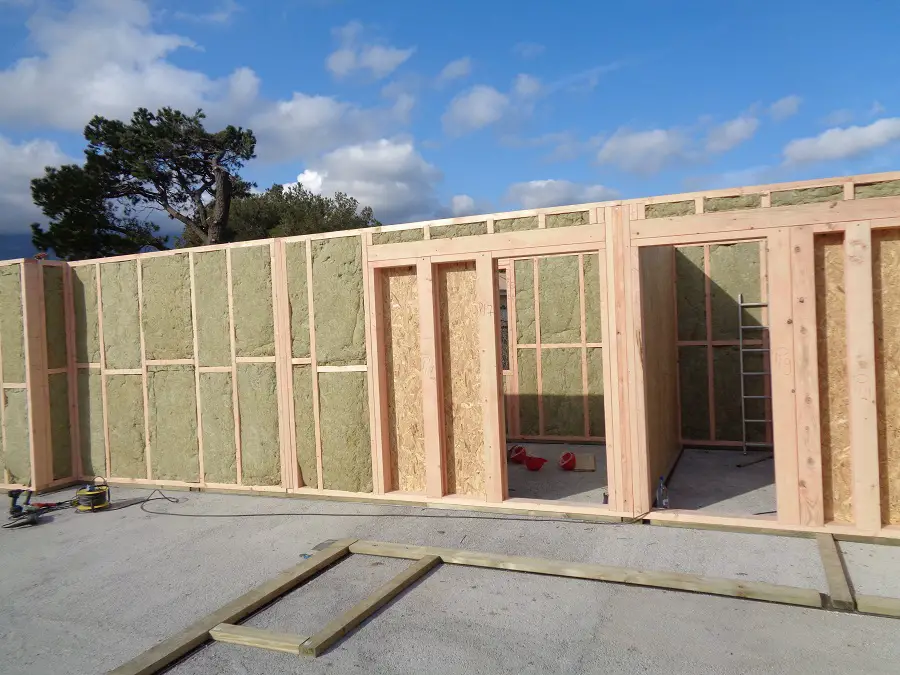
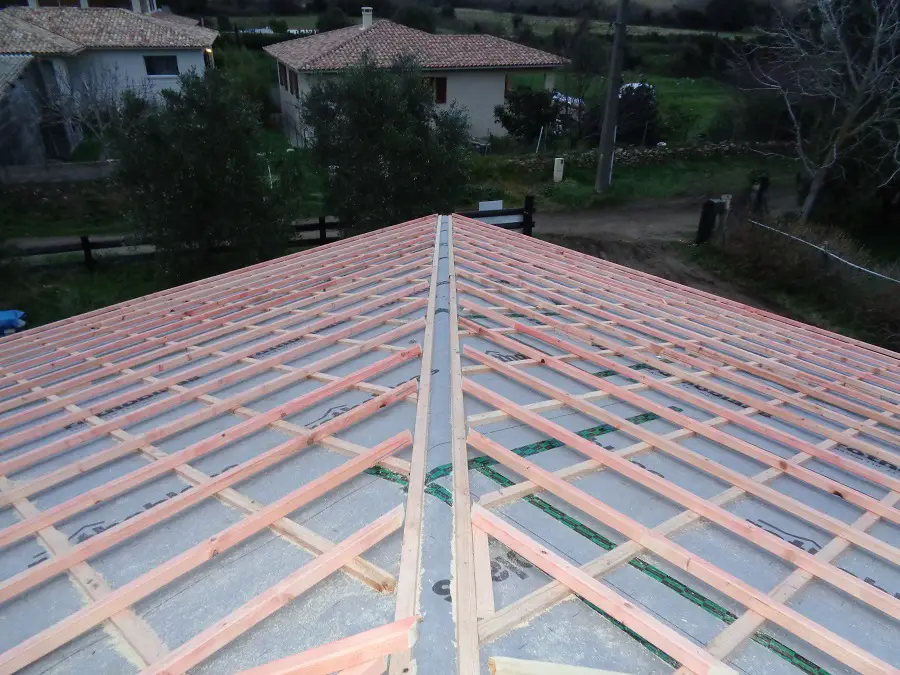
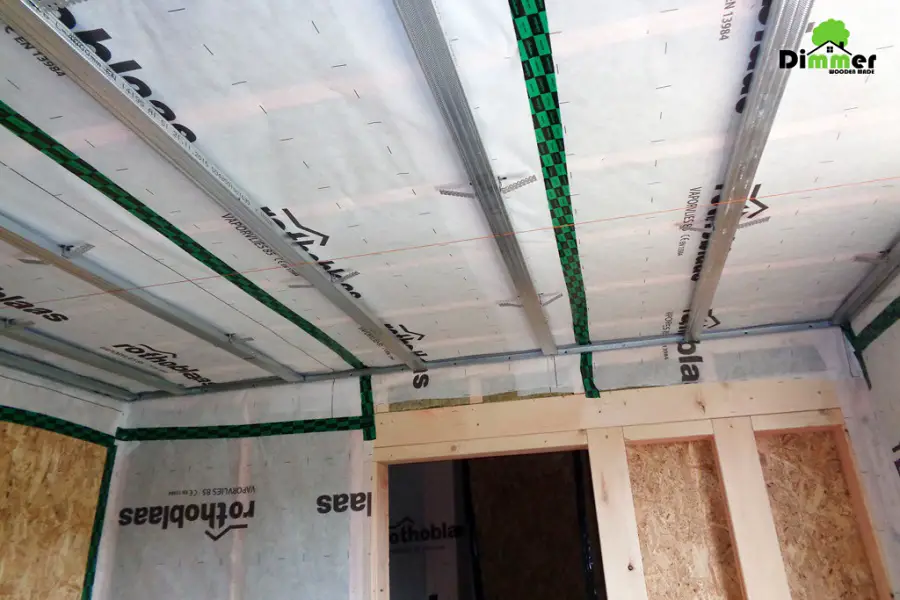
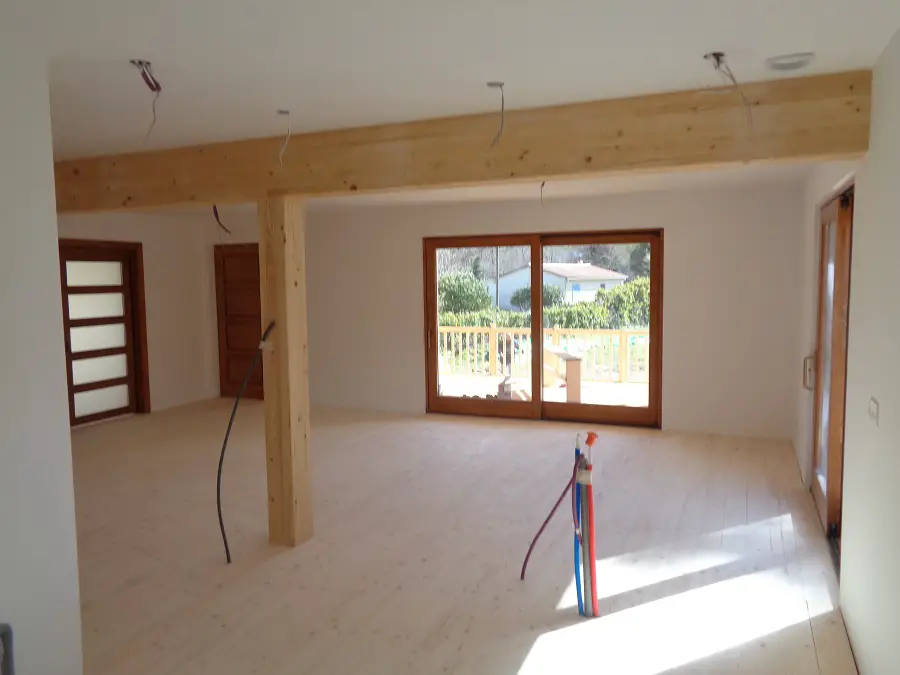
A well-built house is the best advertisement
The owner of this house was the first client in Corsica. Since then Dimmer has built four more houses there, two of the contracts coming on the recommendation of the first client. The owner is so delighted with the house's thermal and sound insulation and its resilience that he always talks about how he never feels the strong gusts of wind in the house that other islanders complain about.
Doing things right so that the customer has nothing but praise for you is the best and safest advertising. Good luck, Dimmer!
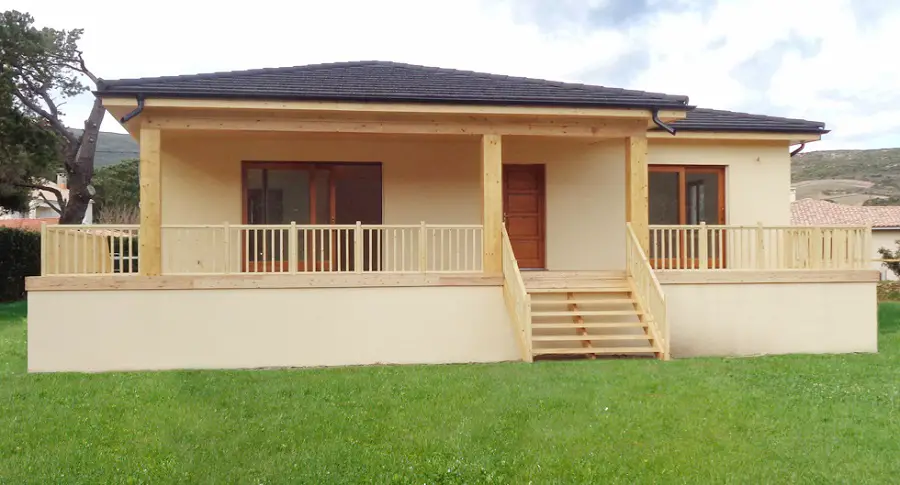

















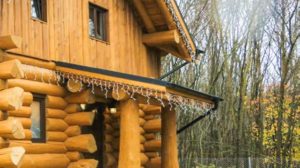

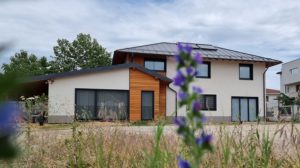
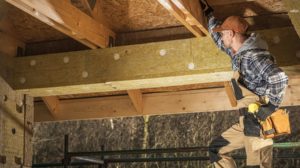
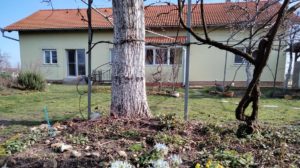

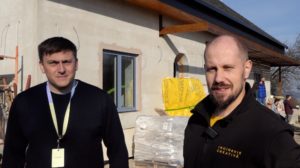
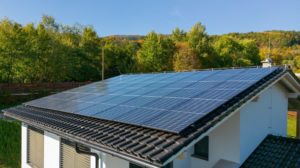
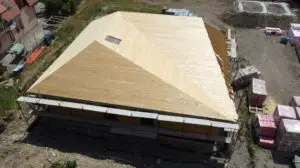
Hello! Could you find out an approximate price for such a house?
PS: I follow you, I'm a subscriber to Wood magazine and I'm very excited about what you do. Bravo!
Hello!
Thanks for your appreciation!
You can only find out the construction and price details from the manufacturer (mydimmerhome.com).
All the best!
I would like to know the contact details of the Dimmer construction company.
Hello!
You have here contact page on the company's website, mydimmerhome.com.
All the best!